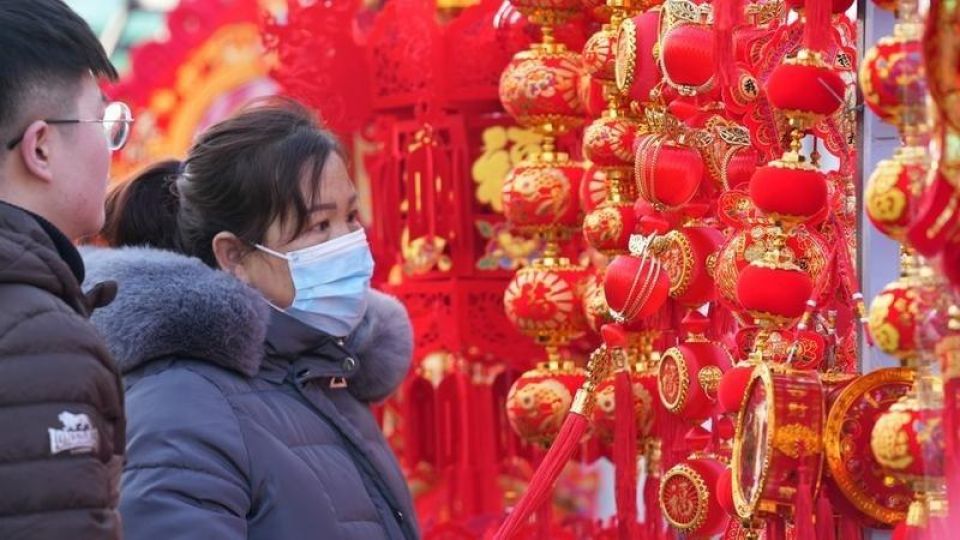February 15, 2022
HAIKOU – Holding a small steel file in one calloused hand and a hammer in the other, Zou Hongda finished a thick pile of paper-cutting artwork after a few knocks with his trusty tool.
Zou, 73, has been making festive lanterns for over 40 years in Baiyan Village of Wenchang City, south China’s Hainan Province.
The Lantern Festival, which falls on Tuesday this year, is the climactic end to the Chinese New Year holiday
The typical structure of the traditional handicraft includes lanterns with auspicious Chinese characters such as “Fu” and “Xi,” which mean fortune and happiness.
The Lantern Festival, which falls on Tuesday this year, is the climactic end to the Chinese New Year holiday. In Wenchang, people usually “send lights” to celebrate and express their wishes and expectations, a tradition dating back more than 100 years.
When evening falls, the lanterns are lit. Accompanied by the sounds of gongs and drums, children carry small lanterns while adults shoulder larger traditional lanterns — the “lantern parade” begins.
It is lantern handicrafters’ persistence that keeps the traditions alive.
For Zou, the Spring Festival is the busiest time of the year, leaving him with only three or four hours of sleep after making lanterns all day. This year, Zou made about 500 lanterns that were sent out to people from over 120 surrounding villages.
Making a lantern usually takes three steps — framing, paper-cutting, and pasting.
The lantern frame requires bamboo that has grown for about two years — not too tender or too old. “If it’s too tender, it will easily shrink, and if it’s too old, it will easily break,” said Zou, adding that the more accurately cut the bamboo is, the better the lanterns will be.
Paper-cutting relates much to the design, which usually adopts symmetrical patterns so that the light can better radiate out from the inside.
The craft of pasting paper-cuts has been improved in recent years. Zou said adhesive paste was used years ago, but it would become hard overnight. “Now, we use glue, and it’s more efficient.”

Tourists visit a lantern fair in Zunhua city, north China’s Hebei Province, Feb11, 2022. Various events are held across China to celebrate the upcoming Lantern Festival. (LIU MANCANG / XINHUA)
In Zou’s eyes, the beauty of traditional lanterns lies in the interaction between light and paper-cutting. “The real essence of the traditional folk art is released when the light shines through the paper-cuts,” said Zou, noting that the lantern shows in big cities seem to only care about appearance while losing the traditional appeal.
The amount of time and effort required for lantern-making has led to the dwindling numbers of handicrafters, but Zou still insists on it as he has a deep affection for the traditional handicraft.
“Sending lights is our local custom and it’s quite popular. If no one makes the lanterns, the traditional folk custom will be lost,” said Zou.
Now, Zou’s two granddaughters as well as his son and daughter-in-law have all joined him in making lanterns.
“I’m old and feel keen that my abilities fall short of my wishes, but I can still continue to make lanterns for four or five more years,” said Zou.


